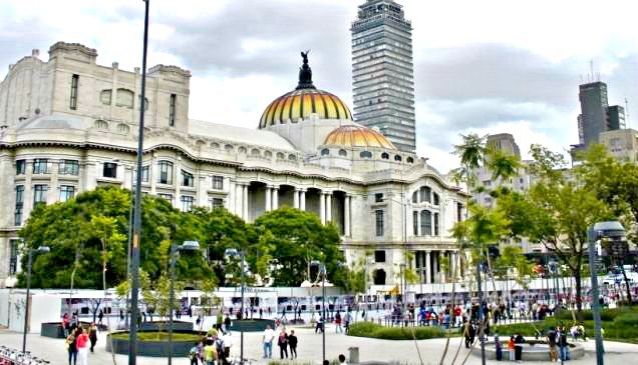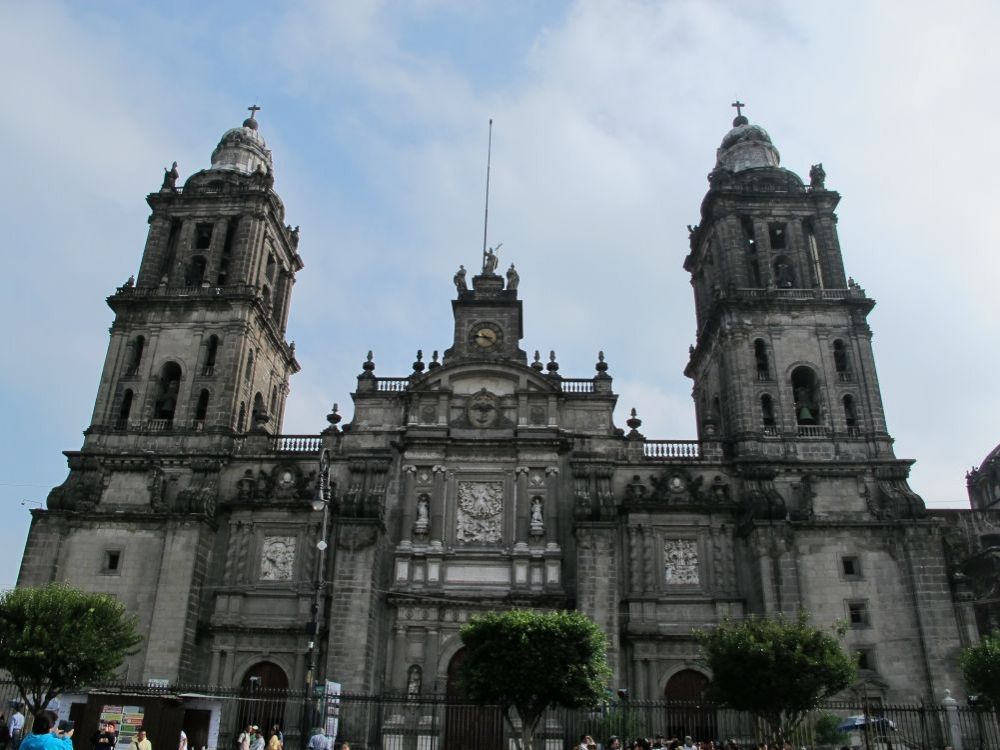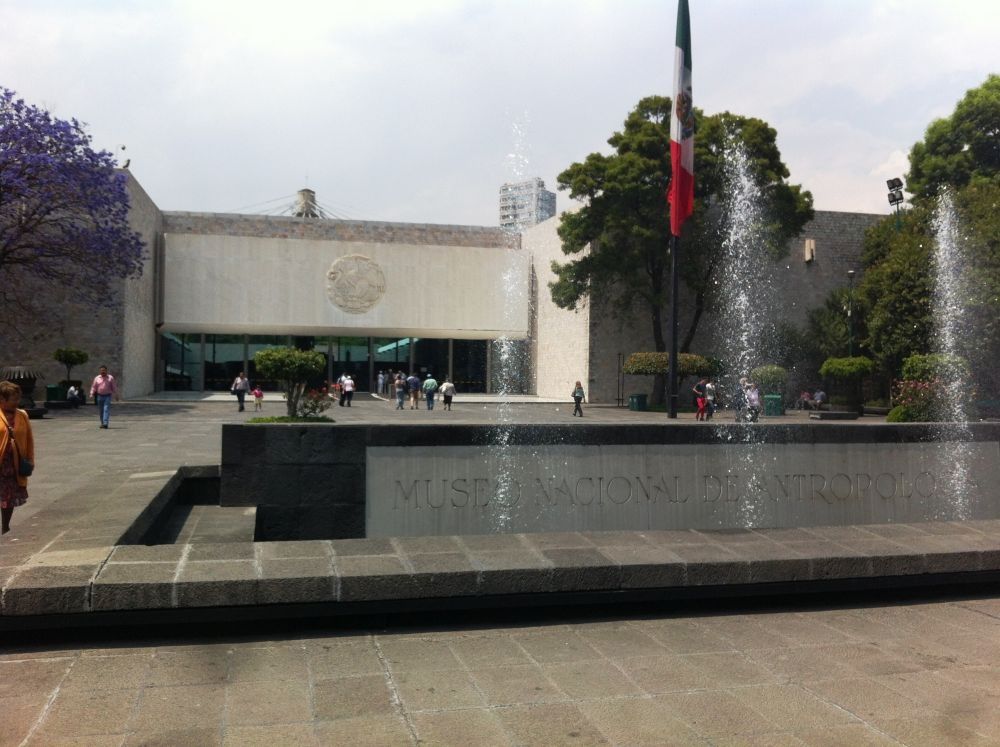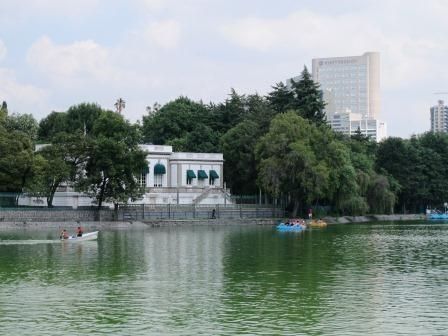A capital city full of history, secrets and wonders

Mexico City is full of wonderful secrets and astonishing facts that you may have never imagined. Here’s a list of 20 of them that you probably didn’t known about this ancient and magic capital city:
1. Founded in 1325, Mexico City is the oldest capital city of the Americas. It was the capital of the Aztec Empire which had approximately 300 thousand people, a larger population than any European city at that time, when it was conquered by Spain in the 16th century. Its original name in the local indigenous language (nahuatl) was Tenochtitlan or Mexico-Tenochtitlan, which was preserved by the Spanish Crown. Afterwards, the city’s inhabitants named it just Mexico. Subsequently, it was the capital city of the Viceroyalty of New Spain, the two Mexican Empires (in the 19th Century), the Mexican independent republic and the current nation of Mexico.
2. Mexico City was the second most populated city of the world for many years, after Tokyo. However, according to UN’s “2014 revision of the World Urbanization Prospects”, now this is the fourth largest city with around 22 million people (Tokyo, Delhi and Shanghai make the top 3). Its population and economy are larger than those of more than a hundred countries in the world, and it has more or less the same amount of inhabitants than the entire region of Central America (Guatemala to Panama).
3. It is one of the wealthiest cities of the world, its economic growth is one of the highest and according to PricewaterhouseCoopers’ estimates its economy is set to double by 2020, putting it in 7th place after Tokyo, New York, Los Angeles, Chicago, Paris and London. More than 20% of the Mexican economy is concentrated here. Therefore, it is one of the most important financial centers of not only the Americas, but the world.
4. The city is located on mountains, 2.2 kilometers above sea level, and its weather is mild rather than warm. Though some people who are not used to these high altitudes may experience difficulty breathing when first landing in Mexico City, this symptom normally lasts for a couple of hours.

Cathedral
5. UNESCO has declared four places in this city as World Cultural Heritage: the Historic Center, Xochimilco (a borough known for its canals and artificial islands –chinampas-), UNAM's Campus C.U. (Mexico’s largest public university) and Luis Barragan’s House and Studio (a prominent Mexican architect).
6. The central square of the city, commonly known as “Zocalo”, is the second largest of the world. It achieved its current aspect in 1958 and since then it has remained as a 46,800 square meters plaza.
7. UNAM is the largest university of the world and Mexico’s most important cultural project. It has three orchestras, cinemas, theaters, a soccer team, campi in the USA, Canada, Spain and China and more than 30 museums in Mexico. In its 170 hectares of construction, you can find murals of Siqueiros, two fire stations, one TV channel, almost 40 thousand academics and more than 300 thousand students!
8. Mexico City has the largest amount of museums in the Americas and the second largest amount in the world, after London. It has 186 officially recognized museums and more than 200 if those with no official recognition are included. It has more museums than Madrid, New York or Paris.

Anthropology Museum
9. Mexico City’s metro system (subway) is the largest of Latin America, with 12 lines along 226 kms, 195 stations and 7 million people using it every day.
10. Chapultepec’s Castle is the only real castle in the Americas, as it was home of Spanish Viceroys and the Austrian Emperor, Maximilian of Habsburg.
11. Chapultepec’s park is twice the size of New York’s Central Park!
12. The Alameda Central is the first urban park of the continent, built in 1592.
13. The oldest street of the Americas was built in Mexico City around 1377-1389 by an Aztec emperor. Today, it has five different names: Tacuba, Avenida Hidalgo, Puente de Alvarado, Ribera de San Cosme and Mexico-Tacuba.
14. The Villa de Guadalupe is the second most visited Catholic sanctuary in the world (after the Vatican), with 14 million visitors a year –more than 6 million only in December 12, the day of the Virgin.
15. Mexico City has the largest amount of palaces in the continent, as it was the capital city of New Spain and the financial center of the Americas for three centuries. That is why back in the 19th century Charles Joseph La Trobe, Lieutenant Governor of the colony of Victoria in Australia, named it “The City of Palaces”.

Xochimilco
16. There are at least eight important archeological zones in Mexico City and surroundings: Cuicuilco, Santa Cruz Acalpixca (in Xochimilco), Templo Mayor (in Zocalo), Tlatelolco, Santa Cecilia, Tenayuca, Teotihuacan and Acozac.
17. Mexico City has the biggest bull ring of the world (it can host 41 thousand people), which also serves as scenario for concerts and even motocross tours!
18. Mexico City was home to two World Cups (1970 and 1986) and the 19th Olympic Games (1968).
19. More than 13 million people visited Mexico City in 2014: 10.5 million national tourists and 2.6 million international ones.
20. In 2013, Mexico City won a prize at the City Climate Leadership Awards for its global leadership in public policies aimed at improving the quality of the air. It was included in the list of 10 cities with better sustainable development. Mexico City has taken measures to drastically reduce its high levels of air pollution by implementing programs that limit the use of private vehicles, enhance reforestation and promote green education.
In addition, Mexico City is best known worldwide for its hospitality and its people’s warmth. Its people (commonly called “chilangos”) will always be ready to welcome you with the biggest and kindest smile. Come and discover it yourself!

Chapultepec Park